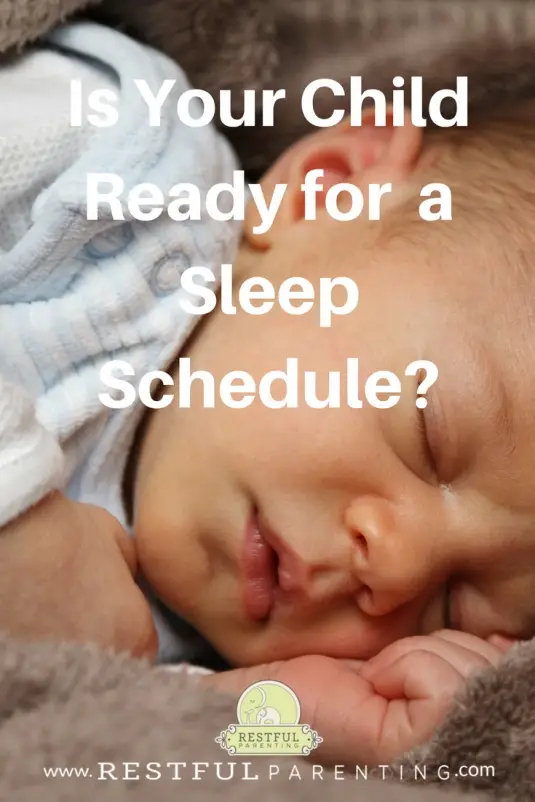How and when to establish an age appropriate schedule for your child
Routines are an important, essential part of your child’s overall day, but a schedule can be just as important!
Having a predictable schedule with a new baby may sound great however, their systems are too underdeveloped and their internal clock doesn’t develop until closer to 3/4 months old.
Although it might sound amazing to have your new baby on a schedule right away it doesn’t always work that way. There definitely are some theorists who do recommend rigid schedules right from infancy however, in certain infants it can lead to some negative health issues including failure to thrive and slow growth. We prefer to focus more on the wake windows as opposed to a set schedule in the beginning.
When it comes to children under the age of 6 months, the schedule is not the main focus. Routines are an important, essential part of your child’s overall day, but a schedule can be just as important!
Having a predictable schedule with a new baby may sound great however, their systems are too underdeveloped and their internal clock doesn’t develop until closer to 3/4 months old.
Although it might sound amazing to have your new baby on a schedule right away it doesn’t always work that way. There definitely are some theorists who do recommend rigid schedules right from infancy however, in certain infants it can lead to some negative health issues including failure to thrive and slow growth. We prefer to focus more on the wake windows as opposed to a set schedule in the beginning.
How to Create an age appropriate schedule:
Wake windows and Sleep Cues
The difference between using wake windows and a schedule is simple. The wake window is the amount of time your child is awake between sleeps. A newborn’s wake window is very short, roughly 45 minutes while a 4 month olds’ is closer to 90 minutes. The goal is to work on getting them back to sleep within those time frames. Around 4 and 5 months old you will see the morning nap start to develop and become a little more consistent. This will help if your child has a consistent morning wake time. We genuinely understand that waking your child in the morning seems counter active and setting an alarm to have to wake your child sounds crazy but in order to establish a great daytime schedule, having them wake up every morning within 30 minutes will be important.
Sleep Cues
Following your child’s sleep cues is a wonderful way of being able to tell when your child is tired however, some children will have very subtle sleep cues, which can make it very difficult for parents to decipher their tired signs. This is why it is important to use both the clock and follow your child’s sleep cues to ensure that they are going to sleep at the right times.
We have made identifying the sleep cues a little easier for you by breaking them up into three sections. They will be more receptive to sleep if you start your routine and get your child off to bed before the advanced sleep cues begin.
First sleep cues: Fidgeting, turning head away from people or objects, loss of interest in toys, zoning out staring blankly, slowed activity.
Mid range sleep cues: Rubbing eyes, pulling at ears, scratching face, less coordination, arching back, leaning backward, and yawning.
Advanced sleep cues: Burying face in caregiver’s chest, red eyelids and eyebrows, fussing and/or crying are signs that the child is starting to become overtired or you have missed the window for optimal sleep.
Schedule
he schedule we are referring to are the set times your little one wakes up at in the morning, sleeps throughout the day as well as bedtime. It is something that most babies between 5-7 months need help establishing and it can take upwards of a couple of weeks to really get to the point of having a set, predictable daily schedule. It is important to know that when working on establishing a schedule it is very common for the naps to become short and inconsistent as their bodies are adjusting. Try and maintain the schedule as best as possible and you will see that your child will quickly begin to feel tired at those particular times, making bedtime and naptimes so much easier. Most parents also benefit from their children being on a schedule as it makes planning activities and appointments less stressful.
If you are working on adjusting your child’s sleep schedule, we recommend that you adjust it slowly by 15-20 minute increments every few days until you have reached the desired sleep times. Because your child has become so accustomed to falling asleep at a certain time, this will allow their internal clock ample time to adjust to the new times.
We have included a general schedule for children between the ages of 6 months and 3 years old or no longer napping throughout the day. Although this may not work for every family, this is the schedule that we often recommend and encourage families to follow.
Here is our recommended sleep schedule:

Much like routines, a predictable schedule will allow your child to feel in control of their day. It will give them the sense of security to be able to predict what comes next and can really go a long way in reducing anxiety surrounding transitions from one part of the day to the next. The internal clock responds really well to a schedule. If you are using consistent wake windows everyday and then a schedule when your child is old enough, their body becomes used to falling asleep at certain times, which will make nap and bedtime so much easier on you and them! If you go to bed every night at 11pm, your body starts to get tired and is ready for sleep at 11pm. If one night you decide to go to bed at 8pm, chances are, (unless you are a sleep deprived mom then an 8pm bedtime probably sounds heavenly,) you will have a very hard time falling asleep. Your body hasn’t adjusted to going to bed at 8pm so it isn’t prepared.
If your child has not been sleeping well, a predictable schedule may just be the missing piece of the puzzle for your family.
If you need support and guidance to get your child on a sleep schedule, check out our services page or contact us for a free consultation!



